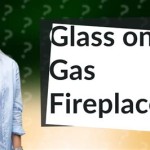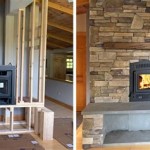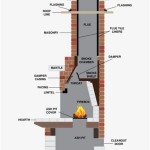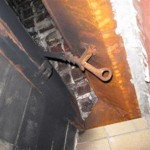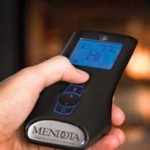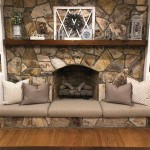Selecting the Right New Gas Fireplace Front
A gas fireplace serves as a focal point in many homes, providing both warmth and aesthetic appeal. Over time, the original fireplace front may become outdated, damaged, or simply no longer suit the homeowner's evolving tastes. Replacing the fireplace front is a cost-effective way to revitalize the appearance of a gas fireplace without the expense of a complete fireplace replacement. Choosing the right new gas fireplace front requires careful consideration of several factors, including safety standards, style options, material choices, and installation requirements. This article offers a detailed guide to navigating the selection process.
Understanding Safety and Compliance
Before considering aesthetics, it is crucial to prioritize safety and compliance with relevant regulations. Gas fireplaces are complex appliances, and any modifications must adhere to established safety standards to prevent hazards such as gas leaks, carbon monoxide emissions, and fire risks. A new fireplace front should be certified by recognized testing laboratories, such as Underwriters Laboratories (UL) or the Canadian Standards Association (CSA). These certifications indicate that the product has been rigorously tested and meets stringent safety requirements.
It is also imperative to verify that the selected fireplace front is compatible with the specific make and model of the existing gas fireplace. Refer to the fireplace manufacturer's specifications and guidelines to ensure proper fit and functionality. Incompatible fireplace fronts can obstruct airflow, interfere with gas burner operation, or create unsafe operating conditions. Consulting with a qualified gas fireplace technician is highly recommended to assess compatibility and ensure that the new front meets all applicable safety requirements.
Local building codes and regulations may also impose specific requirements for gas fireplace installations and modifications. These codes often address issues such as venting, clearance to combustible materials, and gas line connections. Obtaining the necessary permits and adhering to local regulations is essential to avoid potential fines or safety hazards. A qualified contractor can assist with navigating the permitting process and ensuring compliance with all applicable codes.
Exploring Style and Design Options
Once safety and compliance have been addressed, the focus can shift to selecting a fireplace front that complements the existing décor and reflects the homeowner's personal style. A wide range of style options are available, from traditional to contemporary, to suit various aesthetic preferences. Traditional fireplace fronts often feature ornate designs, intricate detailing, and classic materials such as cast iron or brass. These styles evoke a sense of warmth and elegance, often seen in older homes or those with a more formal ambiance.
Contemporary fireplace fronts, on the other hand, tend to embrace minimalist designs, clean lines, and modern materials such as stainless steel or glass. These styles create a sleek and sophisticated look, often favored in modern homes or those with a more minimalist aesthetic. Transitional styles blend elements of both traditional and contemporary designs, offering a balance between classic elegance and modern simplicity. These styles often incorporate neutral colors, understated details, and a mix of materials to create a versatile and timeless appeal.
The choice of fireplace front style should also consider the overall architectural style of the home and the existing interior design. A fireplace front that clashes with the surrounding décor can detract from the overall aesthetic appeal of the room. Consider the color palette, furniture styles, and architectural details when selecting a fireplace front to ensure a cohesive and harmonious design. Online resources, design magazines, and professional interior designers can provide inspiration and guidance in selecting the right style.
Beyond the overall style, consider the specific features and details of the fireplace front. Options include different types of glass, such as clear, tinted, or frosted, which can affect the visibility of the flames and the overall ambiance of the room. Decorative accents, such as grilles, screens, or stone surrounds, can add visual interest and enhance the fireplace's aesthetic appeal. The size and shape of the fireplace front should also be carefully considered to ensure a proper fit and a balanced proportion within the room. Some fireplace fronts offer adjustable features, such as variable flame height or remote control operation, which can enhance the user experience and provide added convenience.
Evaluating Materials and Construction
The materials used in the construction of a fireplace front significantly impact its durability, appearance, and overall performance. Common materials include cast iron, steel, glass, and stone, each offering unique advantages and disadvantages. Cast iron is a durable and heat-resistant material that is often used in traditional fireplace fronts. It offers excellent heat retention and a classic, timeless look. However, cast iron can be heavy and may require specialized installation techniques.
Steel is a versatile and cost-effective material that is often used in modern fireplace fronts. It is lightweight, strong, and can be easily formed into various shapes and designs. Steel fireplace fronts are often finished with a powder coating or paint to enhance their appearance and protect them from corrosion. Stainless steel is a particularly durable and corrosion-resistant option that is often used in high-end fireplace fronts.
Glass is a popular material for contemporary fireplace fronts, offering a sleek and minimalist look. Tempered glass is commonly used for fireplace fronts due to its heat resistance and safety properties. Glass fireplace fronts can be clear, tinted, or frosted, providing different levels of visibility and light diffusion. The quality and thickness of the glass are important factors to consider, as thinner or lower-quality glass may be more prone to cracking or shattering.
Stone, such as marble, granite, or slate, can add a touch of elegance and sophistication to a fireplace front. Stone fireplace fronts are often custom-built to fit the specific dimensions of the fireplace opening. The natural variations in color and texture of stone create a unique and visually appealing look. Stone is also a durable and heat-resistant material that can withstand the high temperatures of a gas fireplace.
The construction quality of the fireplace front is also an important consideration. Look for products that are well-built and feature durable hardware and secure connections. The joints and seams should be tightly sealed to prevent air leaks and ensure proper operation. The overall finish should be smooth and free from imperfections. Reading customer reviews and seeking recommendations from trusted sources can provide valuable insights into the quality and reliability of different fireplace front brands and models.
The ease of maintenance is another factor to consider when evaluating materials. Some materials, such as glass, may require more frequent cleaning to maintain their appearance. Others, such as cast iron, may require periodic refinishing or rust prevention treatments. Choose a material that is relatively easy to clean and maintain, and follow the manufacturer's recommendations for proper care.
Installation Considerations
Proper installation is crucial to ensure the safe and efficient operation of a new gas fireplace front. While some homeowners may be tempted to attempt a DIY installation, it is generally recommended to hire a qualified gas fireplace technician to perform the work. Gas fireplaces involve complex gas line connections and venting systems, and improper installation can lead to dangerous gas leaks or carbon monoxide emissions.
A qualified technician will have the necessary training, experience, and tools to properly install the new fireplace front according to the manufacturer's instructions and all applicable safety codes. The technician will also inspect the existing gas line and venting system to ensure that they are in good condition and capable of handling the new fireplace front. Any necessary repairs or upgrades should be completed before installing the new front. The technician will also perform a leak test after installation to ensure that all gas line connections are properly sealed.
Before starting the installation, carefully review the manufacturer's instructions and gather all the necessary tools and materials. Turn off the gas supply to the fireplace and disconnect the existing fireplace front. Clean the fireplace opening thoroughly to remove any dust, debris, or old sealant. Follow the manufacturer's instructions for attaching the new fireplace front to the fireplace surround. Ensure that all connections are secure and that the fireplace front is properly aligned. Once the installation is complete, turn on the gas supply and test the fireplace to ensure that it is operating correctly.
In addition to the physical installation, consider the aesthetic integration of the fireplace front with the surrounding wall or mantel. If the new fireplace front is a different size or shape than the old one, some modifications to the surrounding wall or mantel may be necessary. This could involve patching and painting the wall, or even rebuilding the mantel to accommodate the new fireplace front. Consult with a contractor or carpenter to discuss any necessary modifications and ensure that they are completed properly.
Finally, remember that the gas fireplace is a complex appliance and that proper maintenance is essential to ensure its long-term performance and safety. Schedule regular inspections and maintenance by a qualified gas fireplace technician. Clean the fireplace regularly to remove dust and debris, and inspect the venting system to ensure that it is free of obstructions. By following these guidelines, homeowners can enjoy the warmth and beauty of their gas fireplace for many years to come.

The Best Fireplace Cover For Season Stoll Industries Made In Usa

Fireplaces Inserts Wood Gas Fireplace Xtrordinair

Faber Matrix 3326 Built In Natural Gas Fireplace Front Facing Fmg3326f Junction

Faber Matrix 3326 Built In Natural Gas Fireplace Front Facing Fmg3326f Junction

Superior Outdoor Collection 36 Ss Gas Fireplace Front Open White Stacked Refractory Panels Electronic Propane Vre4336zep

I Built A Fireplace Easier Than Thought

Faber Engage Front Facing Gas Fireplace Feg4916f

Prefab Fireplace Doors Large Selection Affordable
:max_bytes(150000):strip_icc()/ventless-gas-fireplaces-4160746-hero-f9d4bdcd9bd446eb84406de306f790ba.jpg?strip=all)
How To Pick Out A Ventless Gas Fireplace

Fireplaces Inserts Wood Gas Fireplace Xtrordinair

